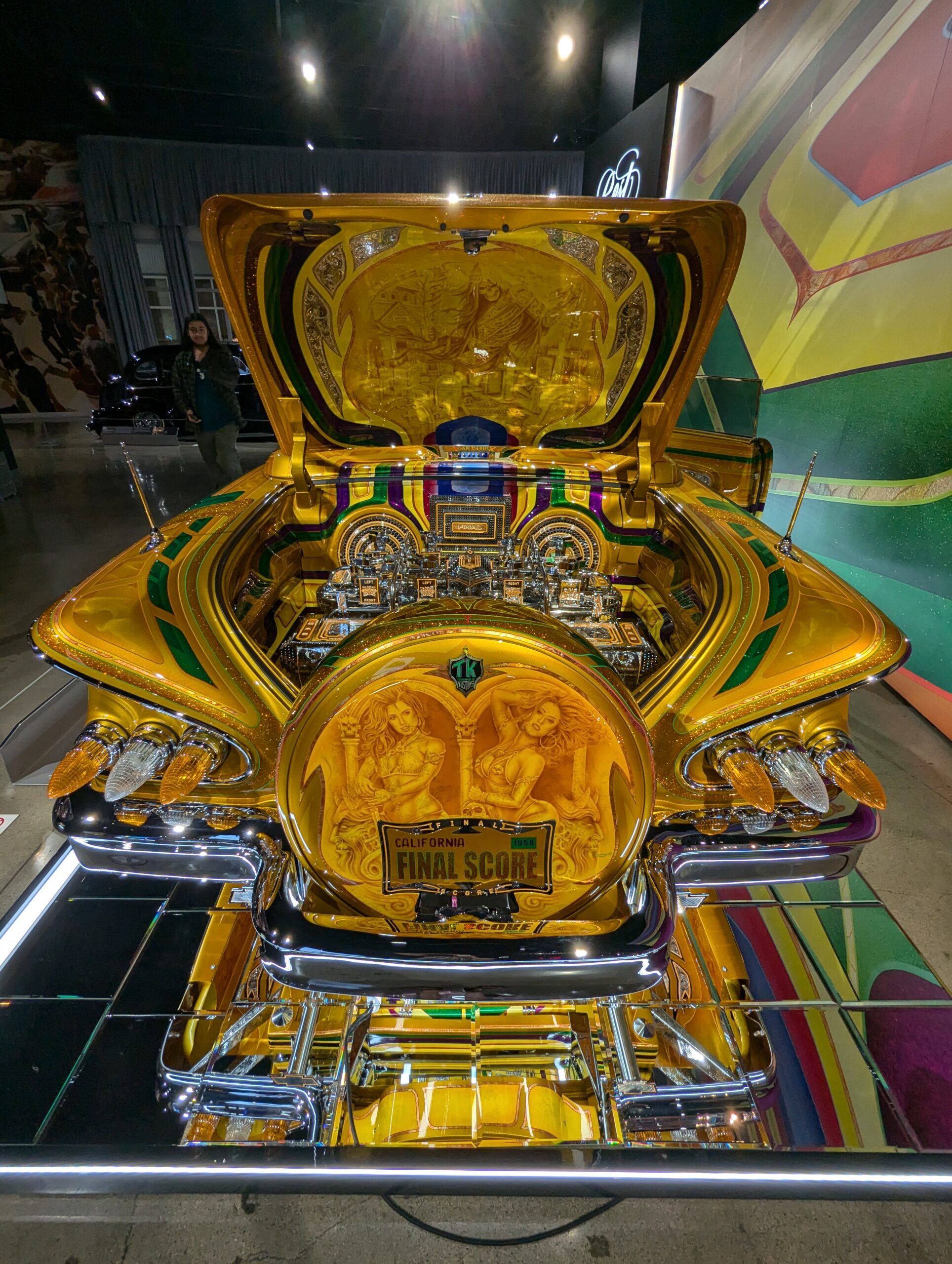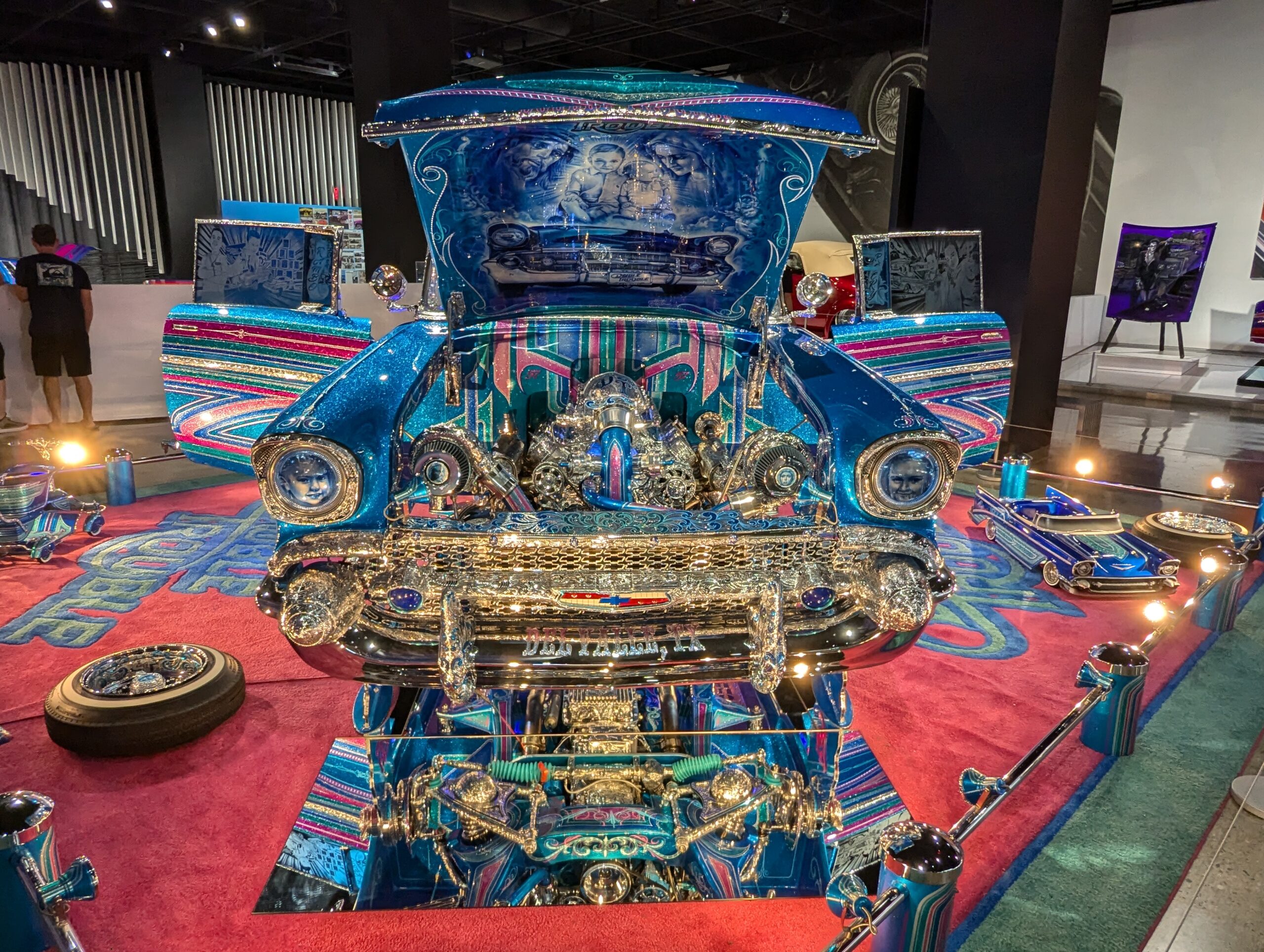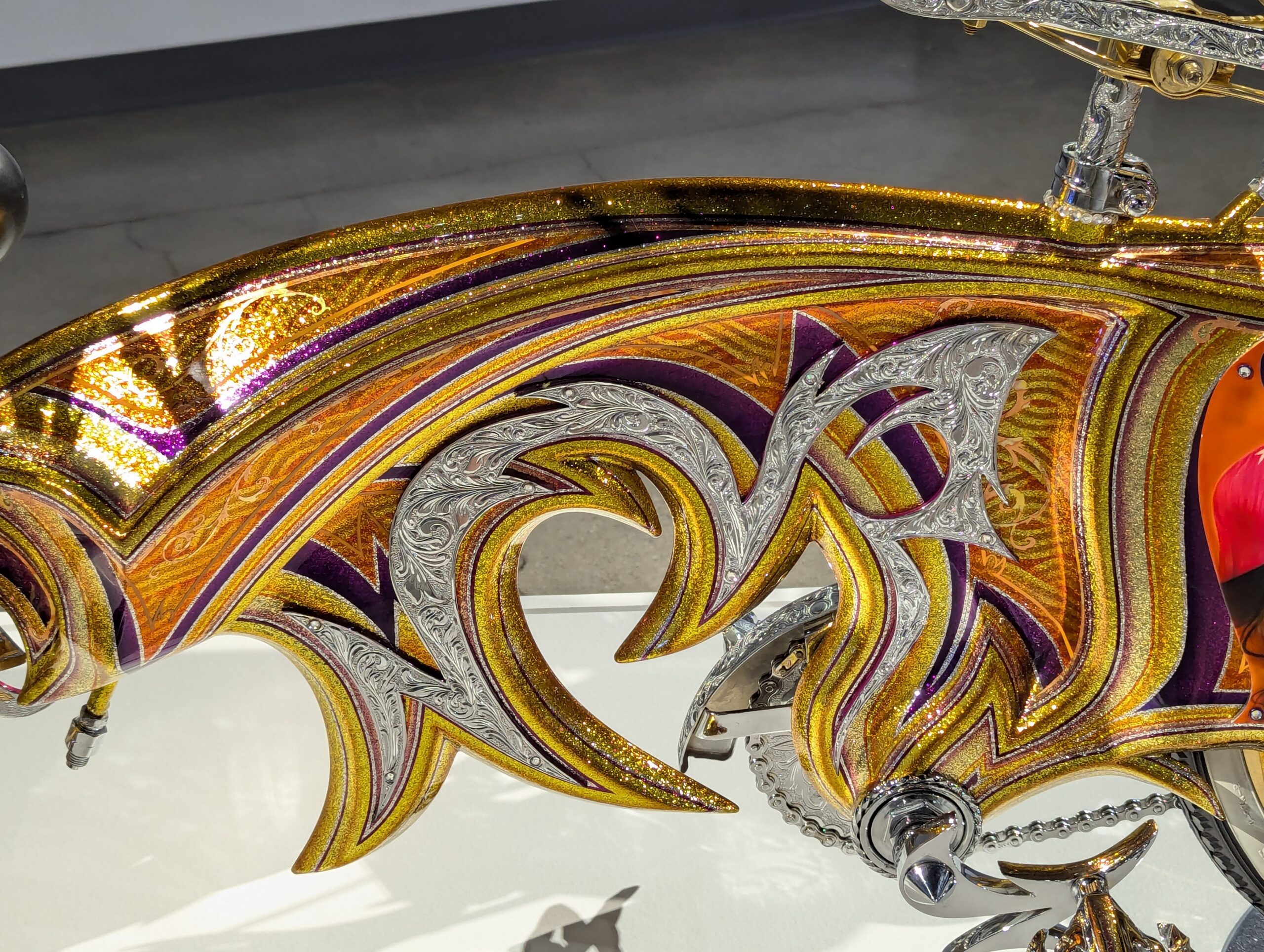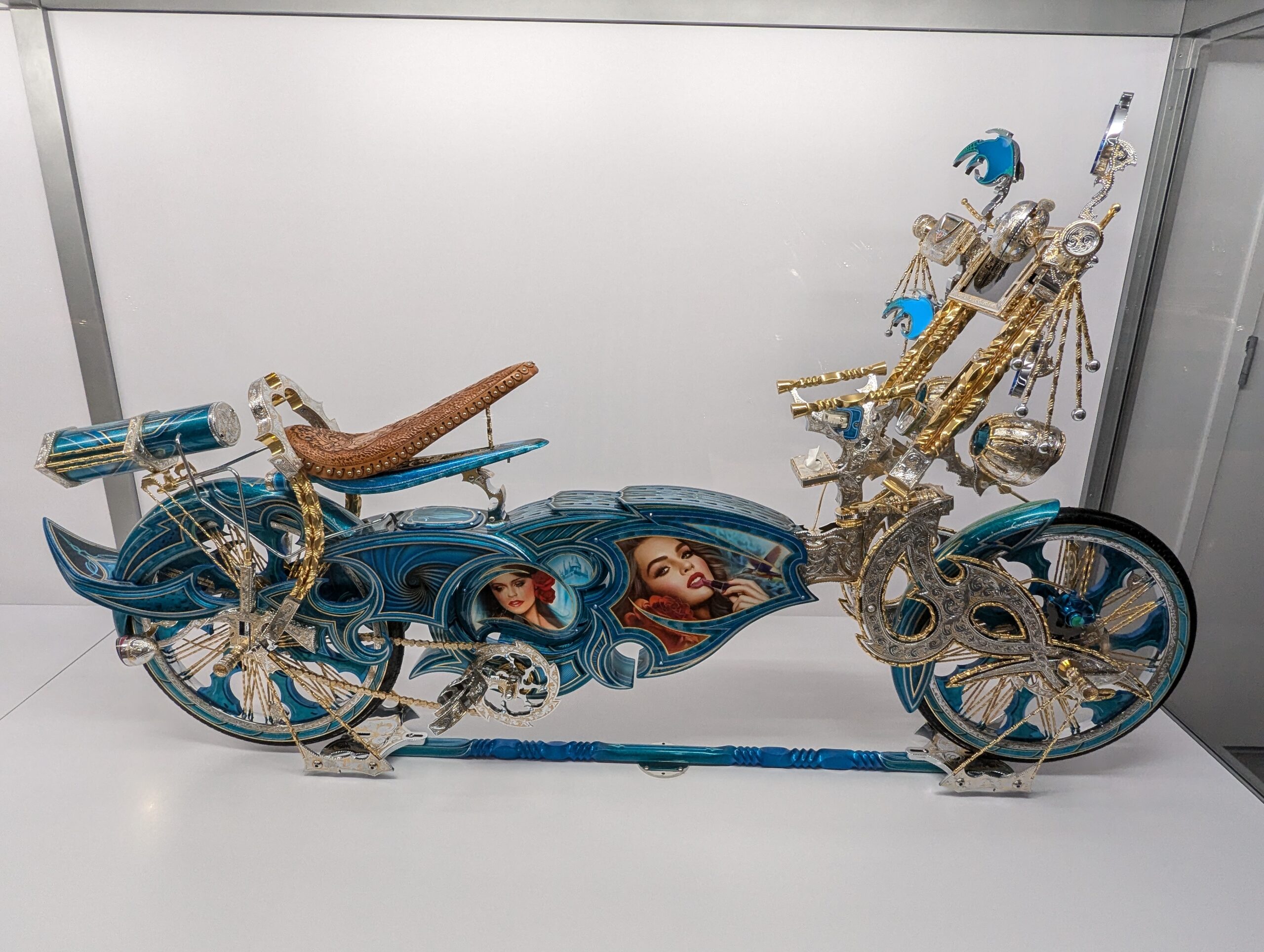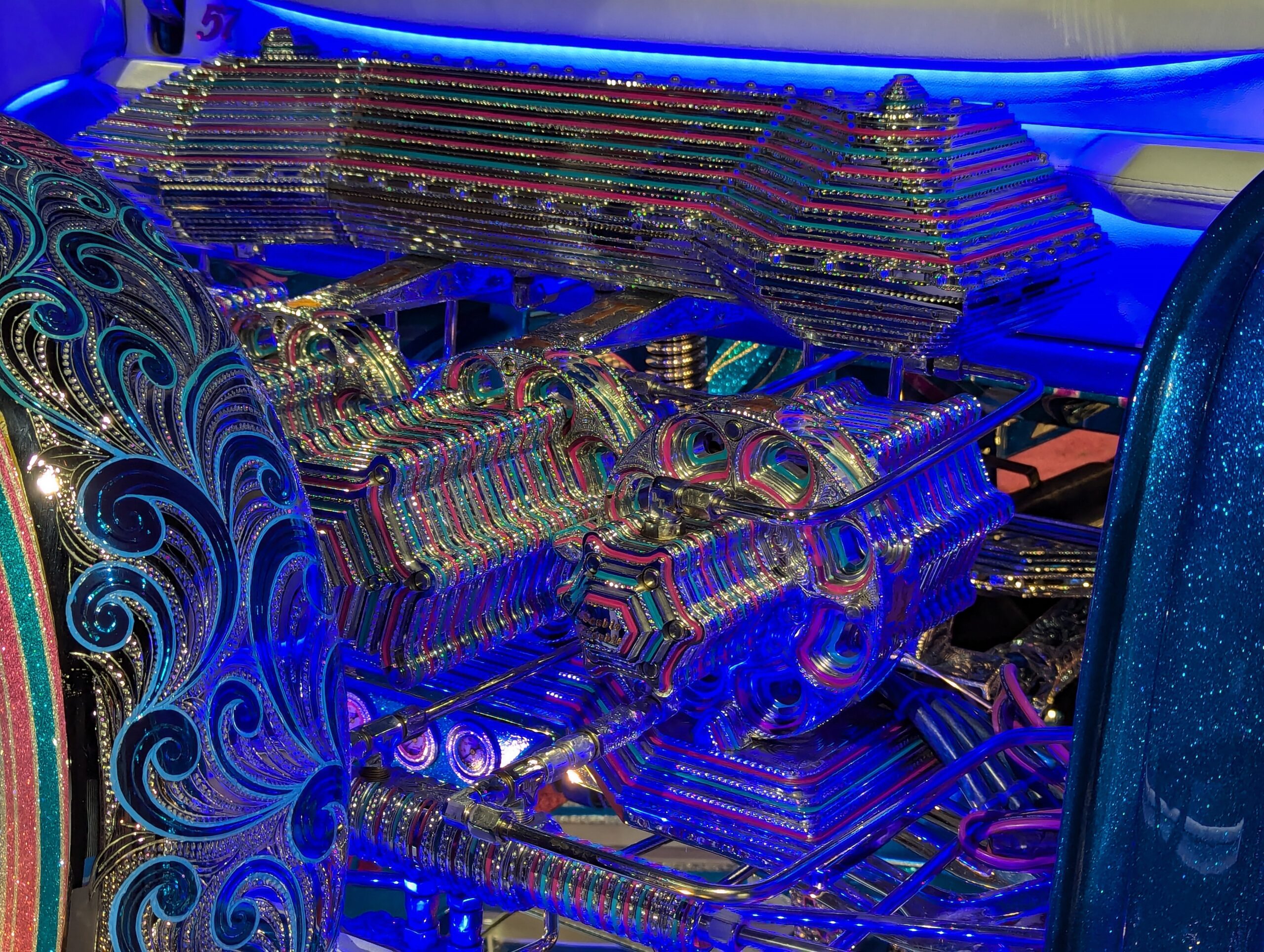
My wife and I recently resolved to spend a half day on a date to avail ourselves of some of the cultural attractions of big city living. We settled on the Petersen Automotive Museum in LA, a strikingly clad building housing hundreds of rare vehicles.
My son accompanied a good friend and his family to this museum a few months ago, and could not stop saying enough good things about it. Although neither my wife nor I are car people, that was enough of an endorsement to pique our interest.
About my relationship with cars: it's purely functional. My first car was a stationwagon with a bumper sticker that read, "I'm the mommy, that's why!" Which is a tidy explanation of why my image is not remotely been intertwined with the car I drive.
This year I upgraded from a used 2009 Kia to a used 2011 Toyota. Despite my practical nature, there were some truly voluptuous cars on show, shaped as much by human imagination bordering on eroticism as by aerodynamic considerations. I could see the appeal in the same way that I can recognize a handsome dude. Not my thing, but I get the allure it might hold for someone else.
What brought the experience to an entirely new level was an exhibit on lowriders. For those who are not familiar with Southern California car culture, lowriders developed in Mexican-American communities starting with classic cars that were modified so their suspension was closer to the ground. Those physical modifications undertaken in the 1940s were the tip of the iceberg.
Another level of modification included the introduction of hydraulics that allowed cars to bounce, dance, and even disassemble specific sections that elevated and rotated independently in the air.
Finally, and most impressive in my eyes, worthy aesthetics (I intended to dictate were the aesthetics, but I like the misnomer so much that I'm going to keep it!).
These cars were painted in eye-popping colors. The hoods were adorned with airbrushed murals depicting a variety of characters: attractive and scantily clad women, Aztec themes, children or honored relatives, indigenous people and their spirit animals, skulls, Jesus, the Virgin of Guadalupe.
My descriptions do not do justice to the the level of detail applied to these cars, which included laser cutting, chroming, plating, and elaborate engraving. Every element of a car, from the engine to the suspension, was customized with elaborate tenderness.
There was nothing that could not be bedazzled in a new and original way with each successive iteration. To zoom in on a section of a given lowrider is to physically experience fractal geometry in color, a blend of complexity and unique beauty that calls for reverence.
The ability to reinvent a utilitarian piece of machinery into something extravagant and bejeweled was not limited to cars. Schwinn bicycles and even strollers were extended the same treatment as some of the lowriders, to stunning effect.
Another facet of the exhibit is that the car clubs that sprouted around the customization of low riders took root in foreign soil. The exhibit displayed two cars from Japanese car clubs, where local fans began to emulate their heroes from Southern California until they had created a variant that fit into the first world despite not being of it.
I take inspiration from this art form for several reasons. Many of today's top artists began as home-grown talent. They stumbled into something they considered beautiful and went all in to master it.
It gives me hope, as someone who doesn't exactly know what form his artistic expression might take, that if these artisans can find their way to a niche form of expression, there is no reason I might not also learn, and even possibly master, an as yet unnamed craft in the future.
